Blackstripe dwarf cichlid - Apistogramma gibbiceps
Scientific name: Apistogramma gibbiceps
Common name: Blackstripe dwarf cichlid
Family: Cichlidae
Usual size in fish tanks: 4 - 5 cm (1.57 - 1.97 inch)
014
Recommended pH range: 6 - 7
Recommended water hardness: 3 - 8°N (53.57 - 142.86ppm)
0°C 32°F30°C 86°F
Recommended temperature range: 25 - 29 °C (77 - 84.2°F)
The way how these fish reproduce: Spawning
Where the species comes from: South America
Temperament to its own species: peaceful
Temperament toward other fish species: peaceful
Usual place in the tank: Middle levels
Food and Feeding
Blackstripe Dwarf Cichlids (Apistogramma gibbiceps) are omnivores that thrive on a varied diet. While they will accept high-quality flake or small pellets, their health and coloration improve with the inclusion of live or frozen foods. Offer them a diverse menu that includes bloodworms, brine shrimp, white worms, and daphnia. Incorporating these protein-rich foods not only enhances their colors but also encourages natural foraging behavior. Feed them small amounts twice daily, ensuring they consume all the food within a few minutes to prevent waste and maintain water quality.
Origin
The Blackstripe Dwarf Cichlid is native to the Amazon River Basin, specifically the Rio Negro and Rio Branco regions in South America. These areas are characterized by slow-moving waters, dense vegetation, and leaf litter, creating a habitat with slightly acidic, soft water. Replicating these conditions in a home aquarium is crucial for their well-being, including using soft, acidic water and adding plenty of live plants to mimic their natural environment.
Sexing
Sexing Blackstripe Dwarf Cichlids can be relatively straightforward. Males are typically slightly larger than females and exhibit more vibrant coloration. They also have extended dorsal and anal fins, giving them a more ornate appearance. Females, on the other hand, are more rounded and may develop a deeper body shape, especially when carrying eggs.
Breeding
Breeding Blackstripe Dwarf Cichlids can be challenging but rewarding. These fish are cave spawners, so providing suitable breeding sites is essential. Use small flower pots, caves, or coconut shells in the aquarium to encourage spawning. The female will lay up to 200 eggs in a secure spot, where she will tend to them while the male guards the territory. The eggs usually hatch within 3 days, and the fry become free-swimming after a few more days. Initially, feed the fry Infusoria, and as they grow, transition them to newly hatched brine shrimp or finely crushed flake food.
Lifespan
With proper care, Blackstripe Dwarf Cichlids can live for 3-5 years in a home aquarium. Maintaining a consistent water quality, a balanced diet, and a stress-free environment will help them reach their full lifespan potential.
Tank Setup and Environment
Blackstripe Dwarf Cichlids thrive in a well-maintained tank that closely resembles their natural habitat. A tank size of at least 60 liters (15 gallons) is recommended for a small group. Heavily plant the tank with live plants like Anubias and Java Fern, and include driftwood and rocks to provide hiding spots and establish territories. These fish prefer soft, slightly acidic water with a pH range of 6.0-7.0 and a water hardness of 3-8°N (53.57-142.86ppm). Maintain a temperature between 25-29°C (77-84.2°F) to keep them comfortable. Using a gentle filtration system and regular water changes will help maintain stable water conditions, which is crucial for their health.
Short Description
The Blackstripe Dwarf Cichlid (Apistogramma gibbiceps) is a peaceful and visually appealing species, well-suited for community aquariums. They are best kept in groups with one male and multiple females to reduce territorial disputes. Their natural habitat is in densely planted tanks with plenty of hiding places, making them ideal candidates for aquascaped environments. Providing slightly acidic water and a diverse diet will bring out their vibrant colors and ensure a healthy, active life.
Pictures
Bought by aqua-fish.net from jjphoto.dk.



 Thread-finned
Thread-finned 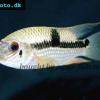 Acara
Acara  Yellow
Yellow  Patrick's
Patrick's  Blue
Blue  Green
Green 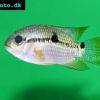 Acara
Acara  White
White  Compressed
Compressed 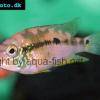 Pastel
Pastel  Midas
Midas  Red
Red  Bluemouth
Bluemouth  False
False 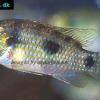 African
African  Agassiz's
Agassiz's  Banded
Banded 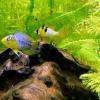 Yellow
Yellow  Cockatoo
Cockatoo  Blue
Blue  Highfin
Highfin  Redstripe
Redstripe  Threadfinned
Threadfinned  Macmaster’s
Macmaster’s 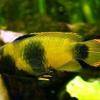 Panda
Panda  Norbert’s
Norbert’s 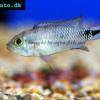 Blue
Blue  Thin-line
Thin-line  Three-striped
Three-striped  Viejita
Viejita 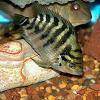 Flier
Flier  Archocentrus
Archocentrus  Convict
Convict  Seven
Seven  Spiny
Spiny  Oscar
Oscar  Sunshine
Sunshine  Chitande
Chitande  Firebird
Firebird  Midnight
Midnight  Lake
Lake  Sunshine
Sunshine  Aulonocara
Aulonocara  Nyasa
Nyasa 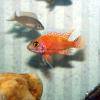 Ruby
Ruby  Grants
Grants  Aulonocranus
Aulonocranus  Chameleon
Chameleon  Benitochromis
Benitochromis  Orinoco
Orinoco  Yellow
Yellow 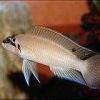 Brichard’s
Brichard’s  Guenther’s
Guenther’s  Southern
Southern  Cichla
Cichla 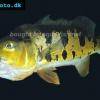 Peacock
Peacock  Chiseltooth
Chiseltooth  Bolivian
Bolivian  Red
Red  Many-pointed
Many-pointed  Jack
Jack  Red
Red  Three
Three 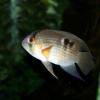 Keyhole
Keyhole  Azureus
Azureus  Red
Red  Jackson’s
Jackson’s  Crenicichla
Crenicichla  Honduran
Honduran  Blue-eye
Blue-eye  Afra
Afra 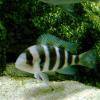 Frontosa
Frontosa  Slender
Slender  Malawi
Malawi  Chequerboard
Chequerboard  Checkerboard
Checkerboard  Malawi
Malawi  Ectodus
Ectodus  Tanganyika
Tanganyika  Canara
Canara  Green
Green  Rostratus
Rostratus  Pearl
Pearl 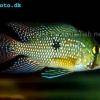 Geophagus
Geophagus  Yellowhump
Yellowhump  Suriname
Suriname  Redhump
Redhump  Red
Red  Dority’s
Dority’s  Argentine
Argentine 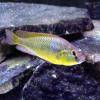 Burton’s
Burton’s  Victoria
Victoria 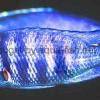 Haplochromis
Haplochromis  Jewel
Jewel  Banded
Banded 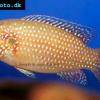 Lifalili
Lifalili  Lowland
Lowland  Texas
Texas  Pantano
Pantano  Severum
Severum  Banded
Banded 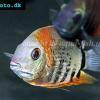 Severum
Severum  Rainbow
Rainbow  Parrot
Parrot  Chocolate
Chocolate  Brown
Brown  Marlieri
Marlieri  Golden
Golden  Striped
Striped  Masked
Masked 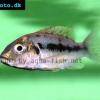 Konye
Konye  Blue
Blue  Trewavas
Trewavas  Electric
Electric  Dwarf
Dwarf  Redbreast
Redbreast  Lamprologus
Lamprologus  Gold
Gold 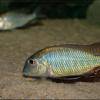 Greenface
Greenface 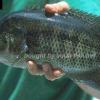 Mayan
Mayan  Aurora
Aurora  Blue
Blue  William’s
William’s 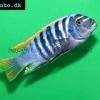 Zebra
Zebra  Malawi
Malawi  Blue
Blue 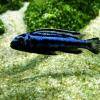 Blue
Blue  Mbuna
Mbuna  Parallel
Parallel  Purple
Purple  Flag
Flag  Bolivian
Bolivian  Ram
Ram  Basket
Basket 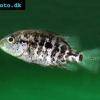 Haitian
Haitian  Zebra
Zebra  Striped
Striped  Neolamprologus
Neolamprologus  Brevis
Brevis  Fairy
Fairy 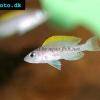 Neolamprologus
Neolamprologus  Cylindricus
Cylindricus  Hecq’s
Hecq’s  Neolamprologus
Neolamprologus  Lemon
Lemon  Mustax
Mustax  Daffodil
Daffodil  Six-bar
Six-bar  Five-bar
Five-bar  Marbled
Marbled 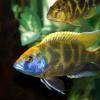 Giraffe
Giraffe  Blue
Blue  Sulphurhead
Sulphurhead  Wolf
Wolf  Jaguar
Jaguar  Blue
Blue  Marakeli
Marakeli  Madagascar
Madagascar  Pinstripe
Pinstripe  Pelmatochromis
Pelmatochromis  Kribensis
Kribensis 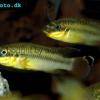 Striped
Striped  Red
Red  Deepwater
Deepwater  Fenestratus
Fenestratus  Nichols’
Nichols’  Southern
Southern  Bumble
Bumble  Demason’s
Demason’s  Slender
Slender  Red
Red  Mbuna
Mbuna  Malawi
Malawi  Kenyi
Kenyi  Powder
Powder  Altum
Altum  Angelfish
Angelfish  Angelfish
Angelfish 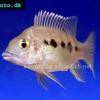 East
East  Juba
Juba  Earth
Earth 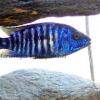 Electric
Electric  Azure
Azure 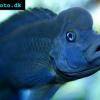 Lionhead
Lionhead  Discus
Discus  Blue
Blue  Red
Red  Zebra
Zebra  Brichard’s
Brichard’s  Blue
Blue  Firemouth
Firemouth  Zebra
Zebra  Yellow
Yellow  Blue
Blue  Dwarf
Dwarf  Blunthead
Blunthead 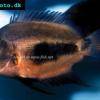 The
The  White
White  Twoband
Twoband  Fenestratus
Fenestratus  Window
Window  Tailbar
Tailbar  Black
Black  Redhead
Redhead 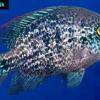 Oaxaca
Oaxaca  Xenotilapia
Xenotilapia